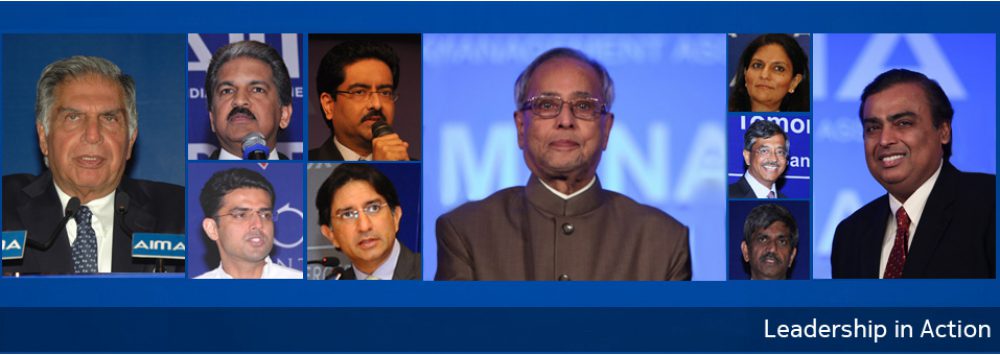
TV Mohandas Pai addressing AIMA’s Vice-Chancellors Council Session 2022
The university of the future will be a collaborative university. It will be a part of the network, but will be technology-led, said Mohandas Pai, Chairman, Manipal Global Education Services at AIMA’s Vice-Chancellors Council Session 2022.
The two major things that have impacted Higher Education in terms of technology include;
1. the massive shift in human habits toward digitization
2. the Industrial Revolution after which education came into actual being.
Mr. Pai further explained that out of 7.8 billion people on the planet about 5.2 billion have access to the Internet. Everything that we need, from supplies to entertainment, from education to banking or even other services like medical or health, etc is available digitally. The massive shift has taken place because of the growth of digital technology, with the pandemic giving more impetus to it. So, there are going to be major changes in any facet of human life including education.
Explaining the 2nd factor, Mr. Pai said that earlier, either the Gurukul system was followed or students went to the teacher’s house to receive an education. The Industrial Revolution then completely overhauled the system of education. The infrastructure of having a classroom, a Professor, and books was instituted after that. The practice of students sitting for the Exams and getting a Certificate after passing them became a process. The Certificate further helped them get jobs.
The University has two objectives to impart; (i) the dissemination of knowledge and (ii) the creation of knowledge for research. You go to a class to get information and knowledge. You are then asked to do projects that ascertain whether you have gained the knowledge that is taught. Secondly, you go to a college for socializing, meet your peers, and have fun with them. Thirdly, you go to a college to get assessed at the end of your term in order to be conferred with a Certificate. You also go to a college because of the brand value it holds. If you go to a college with a good brand value, doors of greater opportunities will be opened to you. Lastly, you get to join different clubs or an Alumni Network and enhance your knowledge more.
Now, what has technology and digitization done to all of these factors? While all these are available in colleges and universities, their cost has become expensive. In India or elsewhere, Higher Education is expensive hence the cost of education has put people in debt to pursue the same.
The impact of technology on the dissemination of knowledge is that whatever knowledge you need for education, is freely available on the Internet. A huge amount of information and research is available on different platforms. As far as assessment is concerned, a BOT (Build Operate Transfer) or AI (Artificial Intelligence) can do this efficiently. Talking about the brand value, the demand is more for people who know how to manage codes and software rather than hiring someone from a reputed institution. It boils down to the alternatives that are available today due to the role of technology.
The new Education Policy in India approaches the matter in a very constructive way and has also come out with a solution. It allures you to take courses for Majors and Minors. It allows you to mix and match courses from different universities and colleges. It also allows you the flexibility of choosing the duration of the Course of your choice, where you can opt-out of the Programme and again come back and complete the same.
So, what is the cost of a technology-based Higher Education? The answer is that technology is going to disrupt Higher Education in a very significant way. With the cost of Higher Education becoming expensive, technology only shows an easier way out. Universities have started short-term Certificate Courses that cost less and have a hybrid (offline and online) model. While the offline format is expensive, the online format is affordable.
The deconstruction of Higher Education also means that you can accumulate the Certificates possibly through an Online University. For a particular course, for example, there will be an affiliation of 50+ Universities and you can either choose from one or mix and match your course from many. This way, you will not only have a tag of a brand but also a lot more opportunities at your behest.
But how do India’s colleges and universities understand this concept and reorient themselves? Every college/university should examine itself and charter out a course for itself based on flexibility, agility, and core competence. A user-friendly process of registering should be done electronically. Whether the mode of delivery is offline or online, it should meet the purpose of cutting the cost and having large enrolments. The process of assessment can be automated with BOT and AI. Finally, there should be platforms to engage in group discussions, socializing, and networking for students.
Universities should also partner with other universities to build a network. While you can offer some courses, the others can offer the rest. You can be the prime university that confers the degree to those who have enrolled along with your partners. If a model like that is once created, the cost will be reduced drastically.
The university of the future will be a collaborative university, it will be a part of the network, but most importantly, it will be technology-led. The whole process will be automated and it can be bought through SAS (Statistical Analysis System) models, or on the cloud. The core team will comprise a team of techies, strategists, and a team that reconstructs. But this may take time, as universities by nature are slow-moving organizations.
The F-TEC companies also play a primary role in building this model, as they have enough capital, they use advanced technology, they have a meticulous strategy, a young team and they are not dependent on the legacy. They are very innovative and offer a student what he/she wants. Besides, they have a segment of workers who work as Placement Officers to help the pass outs get the job of their choice.
Concluding the subject, Pai said that education is becoming more and more of a digital business. The F-TEC companies are going to be the main competitors who will be driven by lower costs, quicker turnarounds, and greater flexibility to give you an assured output. So, strategically, one has to decide what is valuable to you. While policymakers are concerned about the high cost of education, students are concerned about the lack of agility, flexibility, and output. He further said that we are in the midst of the greatest technology disruption and things are going to change for sure, Higher Education will be impacted like any other area of our lives. Universities should adopt technology, leverage it and build their own future.
Watch the full video here: https://youtu.be/7kVJRRjXDMc



